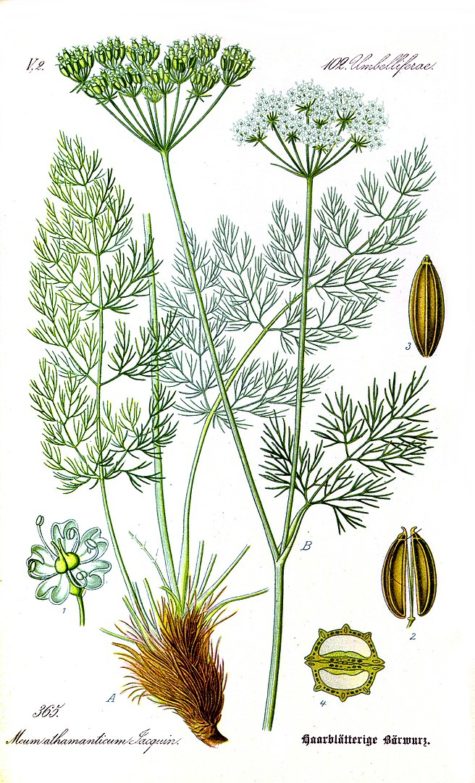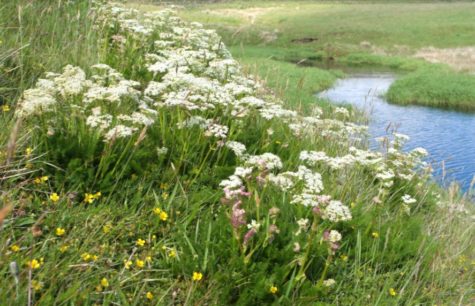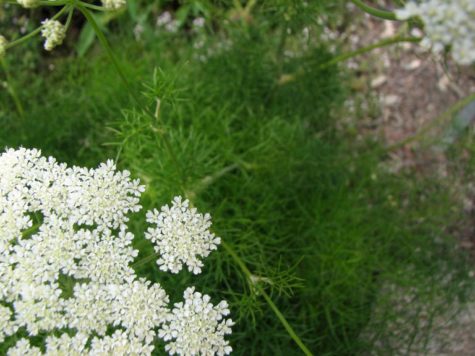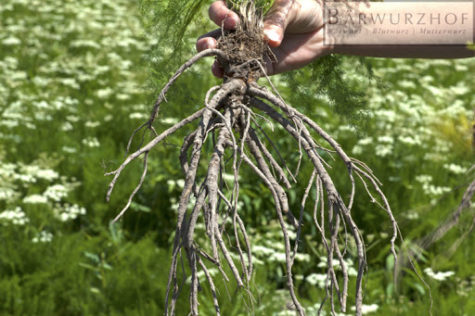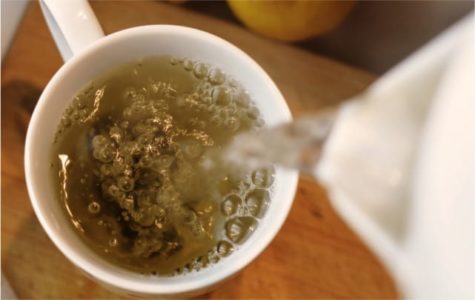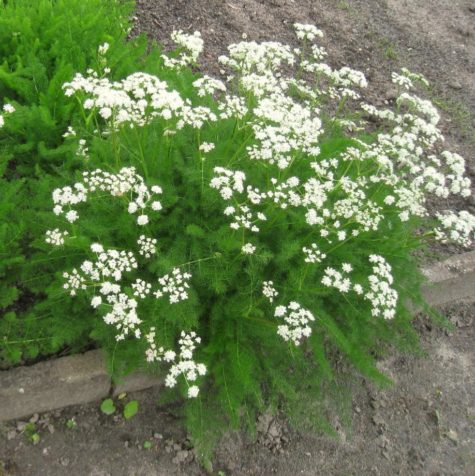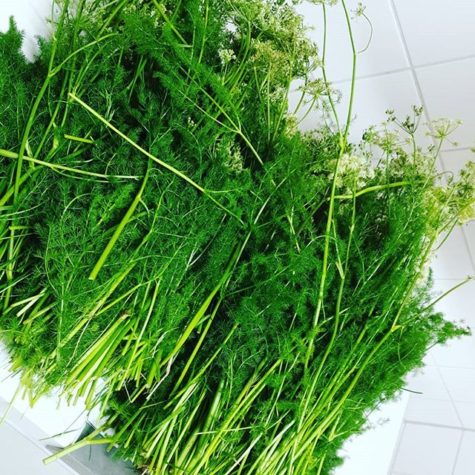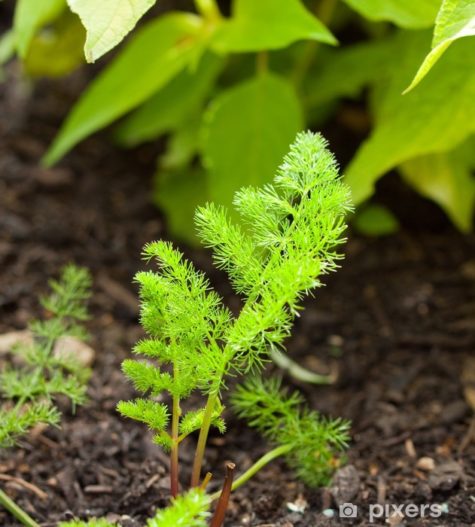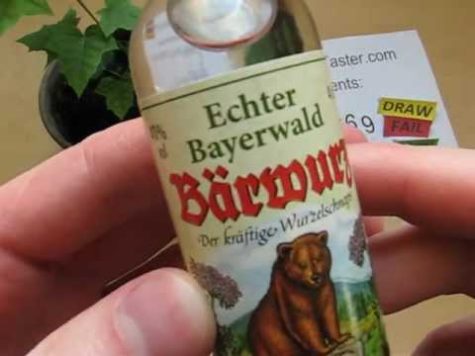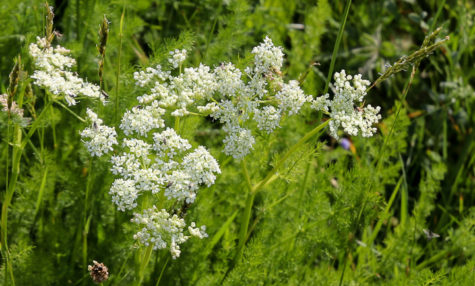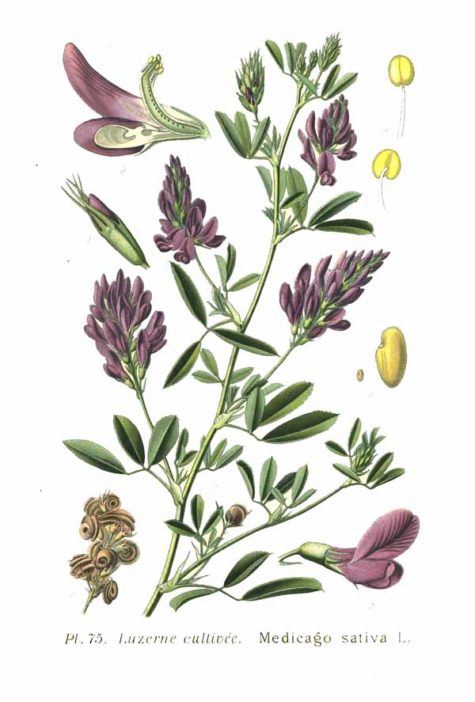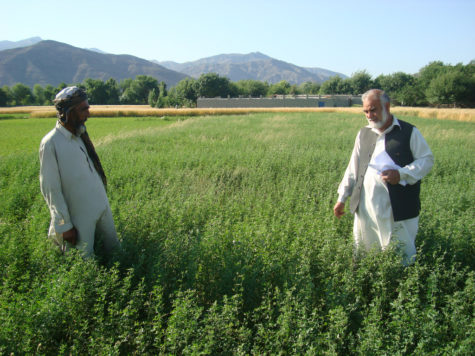Appetizer
Spignel aka Bald Money
- Scientific Name: Meum athamanticum
- Plant Family: Apiaceae
- Common Names: Spignel, Meu
- Parts Used: Root, leaves
- Medicinal Actions: Mild aphrodisiac, appetite stimulant, anti-flatulence, detoxification, purification, diuretic, heart strengthener, stomach fortifier, menstrual stimulater, toner, and revitalizer.
The scent of the root of Meum athamanticum, Spignel, Meu, or Bald Money has much in common with that of both Lovage and Angelica, and the root has been eaten by the Scotch Highlanders as a vegetable.
Spignel is an old herbal medicine. The whole plant is extremely aromatic. The delicate, feathery foliage has been used as a condiment and in the preparation of a wide variety of home remedies as a diuretic, to control menstruation and uterine complaints and to treat catarrh, hysteria and stomach ailments.
Habitat and Appearance
The plant is found in pastures and meadows at a certain altitude. Bald Money can be found as easily in the Scottish Highlands as it can in the Black Forest.
It is a perennial, smooth and very aromatic herb. The elongated root is crowned with fibers. The leaves, mostly springing from the root, are divided into leaflets which are further cut into numerous thread-like segments which gives them a feathery appearance.
The stem is about 6 or 8 inches high, and bears umbels of white or purplish flowers.
The aromatic flavor of the leaves is somewhat like Melilot and is communicated to milk and butter when cows feed on the herbage in the spring.
In German it is known as Bärwurz [bear wort], feminine gender (die) for the plant and masculine gender (der) for a variety of Bavarian schnapps which is flavored with its extract.
Other Names
- Alpine Lovage
- Spicknel
- Spikenel
- Mew
- Meu
- Baldmoney
- Bearwort
- Fenouil des Alpes (French)
- Meo (Spanish)
- Bjørnerod (Danish)
- Bärwurz (German)
- Snauskjoldblom (Norwegian)
- Sköldpaddsört (Swedish).
Spignel (Bald Money) is an old medicinal plant largely forgotten today. There hardly exists any clear reference to Spignel in most herbal books of this century. Despite scant recognition today, the history of Spignel root includes active appreciation by ancient physicians. Records of meum athamanticum include recommendations for treating urinary disorders, stomach complaints, joint complaints, and mild rheumatism.
“The Spignel root is warm and has a dry strength. The powder is a remedy for high temperature fever and gout. The green root is crushed into vinegar and is used against jaundice.” – Hildegard of Bingen
No less than acclaimed German pharmacologist Hieronymus Bock praised the plant in 1539 in his “Kreutterbuch” (‘Herbal Book’) as an all-purpose weapon against ailments of all kinds. Alpine Lovage was also used extensively during births…both for humans and for cows!
The English botanist and herbalist, Nicholas Culpeper (1616 – 1654) mentioned the use of Spignel in his writing, where he wrote that it was an excellent herb to improve both appetite and digestion and that it should work well as a remedy for excessive flatulence, belching, colic, and stomach aches.
According to Culpeper, the powdered root should be administered along with sugar, or as an extract of the root in water, white wine or beer and taken every morning and evening for few days, in order to regulate menstruation, ease childbirth and to promote the expulsion of the afterbirth.
Both the root and leaves of Spignel have a reputation as a good treatment for snake bites and coughs, and in the past, it was believed that an alcohol extract of the herb had aphrodisiac properties.
Spignel appears in all of the important herbal books of the Middle Ages and the Renaissance. At the advent of the 19th century, Spignel fell into obscurity as a medicinal plant. The remedy remains popular in veterinary medicine. And, over the last several decades, Germans have rediscovered the healing properties of this herb.
In Germany today, health trends currently favor the rediscovery of traditional German medicine and klosterheilkunde. And, as with many of Hildegard’s remedies, the primary curative properties of Spignel apply to the stomach, addressing digestive issues, and promoting internal cleanse.
In Bavaria, Spignel appears commonly as a basic ingredient in the production of a stomach-strengthening, digestive liqueur referred to as Baerwurz. The healing effects include mild aphrodisiac, appetite stimulant, anti-flatulence / bloating, detoxification, purification, diuretic, heart strengthener, stomach fortifier, menstrual stimulater, toner, and revitalizer.
Monastic medicine and folk healing often reference the Spignel root to address mild forms of asthma, bladder conditions, kidney cleansing, mild rheumatoid arthritis, urinary tract infections, abdominal pain, flatulence, menstrual cramps, heart irregularity, stress, migraine, weakness of age, and to cleanse blood.
Folk medicine appreciates use of the Spignel root only, and typically by excavating, cleaning, and drying in autumn. Before use, preparation includes boiling in water or wine, or grinding into powder.
Topical application of Spignel includes treating mild ulcers and wounds.
- Spignel tea
Pour 250 ml of hot water over 1 teaspoon of dried leaves and allow 10 minutes to infuse, then strain. This remedy helps address mild digestive issues.
Pour 250 ml hot water over 1 teaspoon of seeds and allow 20 minutes to infuse before straining. This combination helps with migraine, lack of appetite, and mild bladder problems.
- Spignel honey
For stomach and abdominal pains, the powdered Spignel root and honey are boiled into a mixture of 1:3. One teaspoonful of this mixture is used for internal discomfort, including ulcers. Ayurvedic tradition recommends against the practice of boiling honey. As an alternative to honey, replace honey with raw cane sugar and some water.
- Spignel tincture
To make a Spignel tincture at home, pour double grain or ethyl alcohol over the roots of the Spignel in a screw cap glass until all parts of the plant are covered. Allow the mixture 2 to 6 weeks to steep. Then strain and pour into a dark bottle.
Take 10-50 drops of this tincture one to three times a day. If overly concentrated, dilute the mixture with water.
Appearance
Baldmoney or Spignel is a very ornamental is somewhat rare British native perennial with fine, almost fern-like leaves. It is a luxuriant natural perennial native also in the mountainous areas of Europe, where it grows in alpine meadows. In Britain it grows best in the sheep-grazed Scottish Highlands.
The leaves are beautiful, dark green and as fine as the maidenhair fern. The inflorescences are typical of the umbellifers, appearing about midway through summer they are creamy white in flat heads about 5-7cms across and growing up to 60cm in height. Meum athamanticum is long-lived, and given the space improves with each year.
In The Kitchen
Some have compared the taste to lovage, anise, dill, caraway and curry. Since every part of the plant contains all of these aromatic qualities, it is also used in recipes for all kinds of foods.
Mark Williams’ company “Galloway Wild Foods” gathers wild Scottish plants and uses Bärwurz in its carrot bitter. Mark additionally notes that in earlier times the plant was also a popular additive in snuff.
This versatile medicinal plant also works as a spice or herbal salt in the kitchen. In contrast to dill, Spignel retains its aroma even when dried. Spignel stimulates immediate appetite (but moderates long-term appetite) and promotes digestion. The fine dill-like foliage and the subterranean plant parts have a strong, intense taste.
The leaves of Spignel have a flavor reminiscent of curry and the herb is locally often referred to as “the curry plant”. The finely chopped leaves can be used to spice up soups, potato dishes, omelets, fish, meat and vegetable dishes, or in any curry dishes as a replacement.
In addition, the chopped leaves can be used to add a sprinkle of green and a light curry flavor to egg sandwiches, cheeses, fish balls, and white or light sauces. The whole leaves can be added to meat and fish dishes.
The root has a powerful, spicy taste and can be suitable as a spice for casseroles and soups. Both leaves and roots have also been used in soups and stews.
The Spignel plant bears close relationship to fennel and dill. It grows in the mountains, between 600 and 2000 meters above sea level. The ideal soils for Spignel include acidic, nutrient-poor soils, and lean pastures. Traditional use of Spignel root stocks includes processing into gentian-like schnapps and liqueurs or culinary food seasoning.
Bärwurz seeds also proved to be an export hit for the Black Forest region in centuries past. “Bärwurzsalz”, or baldmoney salt, was created by taking the leaves harvested in the springtime, drying them and mixing them with sea salt.
Growing Spignel at Home
Usually the meum athamanticum is propagated by root splitting after flowering, small root pieces are enough to grow a plant. Difficulty often arises in growing Spignel directly from seeds. If possible, sow in pots in Autumn or very early in Spring outdoors, the seeds will not germinate for long.
The Spignel likes sandy, loamy or clay rich, lean and moist soil, the location should be sunny or semi-shady. Spignel thrives in larger pots. Do not fertilize with calcium (chalk).
Since the plant loves consistent conditions, such as stable soil moisture, it can be somewhat difficult to cultivate in some areas. However, in the right setting, this plant needs little attention. The strong main carrot like root ensures the plant can survive even in difficult conditions. In better soil, development into a dense clump is faster.
Odds and Ends
The particular name of this plant, “Bald Money” is said to be a corruption of Baldar, the Apollo of the northern nations to whom the plant was dedicated.
In German it is known as Bärwurz [bear wort], feminine gender (die) for the plant and masculine gender (der) for a variety of Bavarian schnapps which is flavored with its extract.
The Bärwurz plant bears the botanical designation Meum athamanticum, and the feminine form in the German language. That has to do with the fact that “Wurz” is essentially short for “Wurzel” (root), which is feminine in German. But once it’s distilled, German-speakers have to remember that the spirit takes on the masculine form in the language.
And while those familiar with the German language might be tempted to think that the distilled spirit’s masculine character is somehow related to Bär, which means “bear” in German, it isn’t. Not at all, in fact.
The root is used for the distillate called “Bärwurz”, but most distilleries use the more highly cultivated masterwort. The stoneware bottles it comes in are as integral a part of a Bavarian forest dinner as bread and bacon.
Christoph Keller also distills a pure Bärwurz spirit at his Brennerei Stählemühle distillery, but he only uses the seeds. His fascination with the plant began when his architect friend Hardy Happle brought Christoph a 24-pound sack of seeds from his own Bärwurz pasture in Bavaria, which Christoph then distilled into an extremely limited edition spirit.
Contraindications and Cautions
When used moderately, there are no known side effects related to Spignel. According to older writings, larger amounts of Spignel root may lead to headaches.
Sources:
- A Modern Herbal
- Mixology
- Herbal Supplement Resource
- Plants To Plant
- Healthy Hildegard
- Wikipedia
Alfalfa
- Scientific Name: Medicago sativa
- Plant Family: Fabaceae
- Parts Used: The leaves, sprouts, and seeds.
- Actions: anti-anemic, appetizer, diuretic, galactagogue, laxative, nutrient, tonic.
- Qualities: Neutral thermal nature; Bitter flavor; Dries dampness, Spring, Yin
The basics:
Alfalfa follows the doctrine of signatures: its ability to produce exceptional roots benefits our “roots,” which are often identified physiologically as our intestines and kidney/bladder functions. Alfalfa cleans and tones the intestines and takes harmful acids out of the blood. It benefits the urinary system and intestines and detoxifies the body.
Alfalfa contains eight enzymes which help assimilate protein, fats, and carbohydrates. It is safe food even for children and helps nursing mothers produce more milk.
In ancient India, Ayurvedic texts prescribe the use of Alfalfa seeds and sprouts for improving blood cell production and its leaves and stem as a good source of protein and minerals.
Nutritional Value:
Alfalfa is rich in chlorophyll, carotene, protein, calcium and other minerals, vitamins in the B group, vitamin C, vitamin D, vitamin E, and vitamin K. Other important nutrients include iron, magnesium, potassium, phosphorus, sodium, sulfur, silicon, chlorine, cobalt, and zinc. Alfalfa also contains vitamins K and P, and abundant chlorophyll.
The sun-dried hay of alfalfa has been found to be a source of vitamin D, containing 48 ng/g (1920 IU/kg) vitamin D2 and 0.63 ng/g (25 IU/kg) vitamin D3. There is also reference to vitamin D2 and vitamin D3 being found in the alfalfa shoot.
Medicinal uses:
Alfalfa is used medicinally in a variety of ways, depending on the country, culture, and healing tradition.
- In China it is considered to have the following qualities: Anodyne, Depurative, Emetic and is used to treat Fever, Gravel, and Dysuria.
- In Iraq it is commonly used to treat Arthritis.
- In Turkey, in addition to treating Arthritis, it is considered to be a Cardiotonic and used to treat Scurvy.
- In the United States it is believed to be Cyanogenetic, and used in the treatment of and prevention of Cancer.
- Elsewhere it is used to treat Arthritis, Boils, as an Emmenagogue, Lactagogue, and for Scurvy.
Note: In this day and age of global information via the internet and social media, these dividing lines have become increasingly blurred.
Alfalfa is used for kidney conditions, bladder and prostate conditions, and to increase urine flow. It is also used for high cholesterol, asthma, osteoarthritis, rheumatoid arthritis, diabetes, upset stomach, and a bleeding disorder called thrombocytopenic purpura. People also take alfalfa as a source of vitamins A, C, E, and K4; and minerals calcium, potassium, phosphorous, and iron.
Other uses include edema, weight loss, bladder stones, plantar warts, chronic sore throat, fevers, gas pains, peptic ulcers, drug and alcohol addiction recovery.
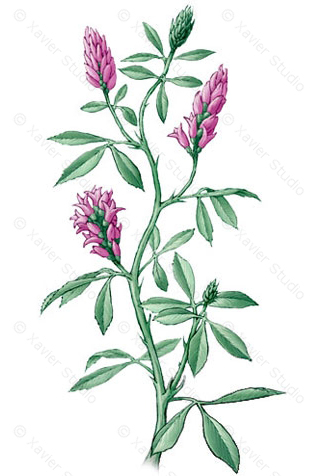 Alfalfa is helpful for chronic joint inflammation and aiding female hormonal balance. It comforts and strengthens the immune system. Alfalfa is rich in vitamins, minerals and other nutrients that play an important role in the maintenance of a healthy body. It contains protein, vitamin A, vitamin B1, vitamin B6, vitamin C, vitamin E, and vitamin K. It also contains calcium, potassium, carotene, iron and zinc and is considered one of the healthiest plant foods, providing an excellent range of nutritive properties for good health and well being.
Alfalfa is helpful for chronic joint inflammation and aiding female hormonal balance. It comforts and strengthens the immune system. Alfalfa is rich in vitamins, minerals and other nutrients that play an important role in the maintenance of a healthy body. It contains protein, vitamin A, vitamin B1, vitamin B6, vitamin C, vitamin E, and vitamin K. It also contains calcium, potassium, carotene, iron and zinc and is considered one of the healthiest plant foods, providing an excellent range of nutritive properties for good health and well being.
Interestingly, alfalfa is a treatment hay fever. Externally the seeds can be made into a poultice for boils, to soothe insect bites, and reduce inflammation. It alkalizes and detoxifies the body. Binds carcinogens in the colon to help speed up their elimination from the body.It is an overall tonic for general health, fatigue, weight gain, and debility. Alfalfa also stimulates the growth of supportive connective tissue, and is useful in the treatment of diabetes.
Alfalfa is a herb rich in protein and the vitamins A, D, E and K. The leaves contain eight of the essential amino acids.Such a a nutrient-rich formula, can be used to replenish the body with vitamins and minerals. It is specifically indicated for those with poor diets and inadequate nutrient intake.
Daily Dosages:
In addition to alfalfa sprouts found in most supermarkets, alfalfa is available as a dried leaf herb, in tablets, capsules, and powders.
- 2 to 3 cups tea
- 2 to 4 grams in capsules or pills 3 times a day
- 6 to 12 grams powder
- 3 ounces sprouts
To make tea, steep 1 tablespoon seed or 2 ounces dried leaf in 1 quart boiling water. In powder form, the pleasant taste of alfalfa is a welcome addition to soups and salads.
For high cholesterol: a typical dose is 5 to 10 grams of the herb, or as a steeped strained tea, three times a day. 5 to 10 mL of a liquid extract (1:1 in 25% alcohol) three times a day has also been used.
Herbal Combinations:
To get more natural vitamins, combine Alfafa with herbs such as Nettle and Rosehip, Nettle is high in both vitamin C and Iron, thus ensuring that energy levels and prevention of cellular damage is assisted. Nettles acts as a blood tonic with the ability to strengthen the body’s natural resistance. Rosehip is also extremely high in vitamin C and is one of the best herbs used for its antioxidant action on the body. It also assists with maintaining healthy collagen.
Cosmetic Uses:
Alfalfa extract (Medicago Sativum Extract) can be an antioxidant in skin-care products, it is said this extract is a great source of protein, minerals and vitamins C,D,E,K for the skin. Conditions and increases skin metabolism to promote skin healing,used as a topical skin conditioner.Alfalfa Extract is primarily used in manufacture of natural face masks and lotions. Saponins in alfalfa extract acts as natural foaming agent. Boots, Clarins and Lancome are using alfalfa extract in their skincare products. Continue reading
Rennie Luttrull: queen-annes-lace-seeds
Rosanna: Spignel aka Bald Money
Annamarie Squatrito: Fumitory
EILEEN Klinghagen: Pumpkin
Mahmudul Hasan: Celery
